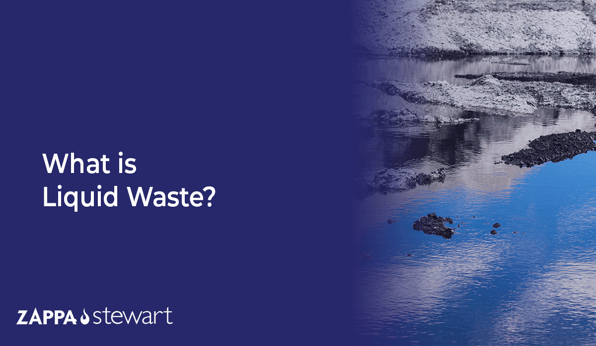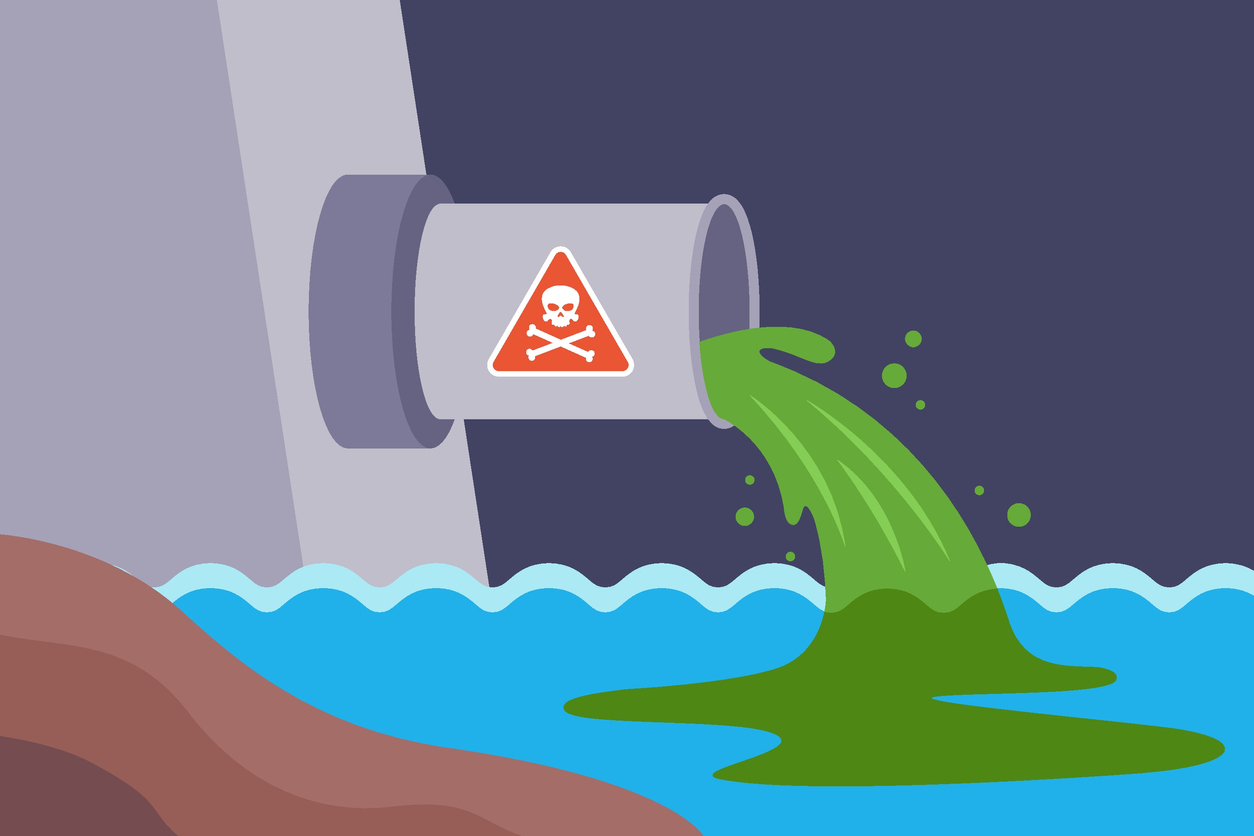Industrial Wastewater Treatment: Advanced Methods for Effective Monitoring
Wiki Article
Recognizing the Comprehensive Refine of Liquid Garbage Disposal: Finest Practices and Environmental Impact Considerations
The administration of liquid garbage disposal is a complex issue that calls for a complete understanding of numerous finest methods and their linked ecological influences. From the sorts of liquid waste generated to the techniques employed for collection, therapy, and final disposal, each step plays a crucial role in securing ecological communities and public health and wellness. As regulative requirements progress and technology advancements, the discussion around these processes comes to be progressively essential. What effects do these modifications hold for future sustainability initiatives, and just how can stakeholders guarantee that they are effectively attended to?Kinds of Fluid Waste
Comprehending the various sorts of fluid waste is vital for reliable monitoring and disposal methods. Fluid waste can be generally classified into several types, each requiring special handling and therapy methods.Industrial liquid waste usually contains hazardous materials, consisting of heavy metals, solvents, and chemicals, created throughout manufacturing procedures. These wastes necessitate strict governing compliance to secure human health and the environment. Domestic liquid waste primarily refers to wastewater created from families, consisting of sewage and greywater, which, although much less toxic, can still present significant threats if improperly taken care of.
Agricultural fluid waste, including drainage from ranches, usually consists of plant foods and pesticides that can cause ecological degradation otherwise dealt with appropriately. Clinical fluid waste, produced from health care centers, consists of contaminated liquids such as bodily liquids and chemicals, needing specialized disposal approaches to stop infection and ecological contamination.
Finally, oil and oil waste, typically created by dining establishments and automobile sectors, can create extreme clogs in drain systems otherwise taken care of correctly. Recognizing these groups helps with targeted methods for treatment, conformity with regulations, and reliable disposal approaches, eventually promoting ecological sustainability and public wellness safety.

Collection Methods
Effective collection approaches are important for the correct management of liquid waste, making sure that it is gathered safely and effectively prior to therapy or disposal. Different methods are employed relying on the sort of fluid waste generated, the volume, and the specific attributes of the waste.One common technique is making use of dedicated collection tanks or sumps, which are developed to capture liquid waste at the source. These systems usually integrate pumps that help with the transfer of waste to bigger storage containers or therapy centers. In addition, mobile collection devices furnished with vacuum modern technology are employed in scenarios where waste is generated periodically or in hard-to-reach places.
For industrial settings, closed-loop systems can efficiently decrease spills and leaks, enabling the healing and reuse of fluid waste. It is likewise crucial to train personnel on proper collection methods to mitigate threats connected with unsafe substances.
In addition, applying normal maintenance timetables for collection equipment makes certain optimal efficiency and safety. The integration of sophisticated monitoring systems can enhance collection performance by supplying real-time information on waste degrees and prospective hazards. In general, effective collection techniques are foundational to sustainable fluid waste management practices.
Treatment Procedures
Treatment procedures play a vital function in the administration of liquid waste, changing potentially harmful materials into reusable sources or risk-free effluents - liquid waste disposal. These procedures can be generally classified into physical, chemical, and biological techniques, each tailored to deal with certain contaminants existing in the waste streamPhysical treatment methods, such as sedimentation and filtration, job by getting rid of suspended solids and particle issue. These methods are usually the primary step in the therapy chain, successfully minimizing the load on subsequent processes. Chemical treatments entail making use of reagents to reduce the effects of damaging substances, speed up heavy steels, or oxidize organic contaminants, consequently boosting the safety of the effluent.
Organic therapy processes, including activated sludge systems and anaerobic food digestion, profit from the natural capacities of bacteria to deteriorate raw material. These techniques are specifically reliable for wastewater having eco-friendly toxins. Advanced therapy innovations, such as membrane layer filtering and progressed oxidation processes, are progressively utilized to accomplish greater degrees of filtration.
Including a combination of these therapy methods not only ensures compliance with regulatory criteria however also promotes environmental sustainability by recouping useful sources from liquid waste.
Disposal Options
How can companies ensure the secure and responsible disposal of fluid waste? Reliable disposal choices are crucial for guarding public wellness and the setting. The primary approaches include land therapy, incineration, and disposal complied with by discharge right into local wastewater systems.Land disposal involves the careful containment of fluid waste in designated land fills, ensuring that it does not seep right into surrounding soil or water. Incineration, on the various other hand, subjects liquid waste to high temperature levels, converting it right into ash and gases, which require correct filtering to minimize discharges. This technique is suitable for contaminateds materials that can not be dealt with through typical ways.
In instances where fluid waste can be treated, organizations may select chemical or biological treatment procedures to reduce the effects of harmful parts before releasing the dealt with effluent into local systems. This path typically straightens with regulative demands, guaranteeing that the effluent satisfies safety requirements.
Eventually, companies should perform comprehensive evaluations of each disposal option to identify its practicality, considering aspects such as waste structure, regulatory compliance, and prospective risks to health and wellness and the atmosphere. By choosing proper disposal methods, services can contribute to an accountable waste monitoring strategy.
Ecological Influence
The environmental effect of liquid garbage disposal is an important consideration for companies looking for to decrease their environmental footprint. Inappropriate disposal techniques can bring about considerable contamination of water sources, dirt destruction, and adverse effects on regional communities. As an example, dangerous fluids can seep into groundwater, positioning threats to alcohol consumption water products and aquatic life. In addition, the discharge of untreated or inadequately dealt with waste right into surface area waters can result in eutrophication, leading to oxygen deficiency and the succeeding fatality of fish and other microorganisms.
To minimize these influences, companies have to adopt ideal methods such as applying strenuous waste therapy procedures, promoting recycling and reuse, and sticking to governing requirements. By taking a proactive technique to liquid waste administration, entities can significantly minimize their environmental impact while supporting lasting development objectives. Eventually, a thorough understanding of the ecological effects related to liquid waste disposal is vital for educated decision-making and accountable stewardship of natural deposits.
Final Thought
Efficient administration of fluid waste is critical for safeguarding environmental stability and public health and wellness. By embracing finest techniques in disposal, collection, and treatment, along with adherence to governing criteria, the possibility for unsafe contamination of communities can be dramatically decreased. Continual advancements in technology and processes add to lasting waste administration initiatives. Ultimately, a detailed understanding of fluid waste disposal not only reduces ecological impacts but likewise promotes a dedication to accountable source monitoring and environmental stewardship.The administration of liquid waste disposal is a multifaceted concern that needs a detailed understanding of numerous finest practices and their connected environmental impacts. From the kinds of fluid waste generated to the techniques employed for collection, treatment, and last disposal, each step plays an essential duty in safeguarding communities and public health and wellness.The environmental effect of liquid waste disposal is a critical consideration for companies seeking to reduce their environmental impact. Eventually, a comprehensive understanding of the ecological influences connected with liquid waste disposal is essential for notified decision-making and responsible stewardship of all-natural sources.
Eventually, a comprehensive understanding of fluid waste disposal not only minimizes ecological impacts but likewise cultivates liquid waste removal melbourne a commitment to accountable resource monitoring and environmental stewardship.
Report this wiki page